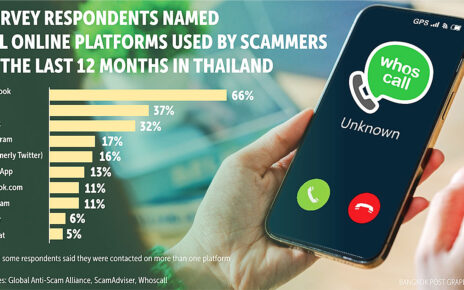The Metropolitan Electricity Authority (MEA) has issued a stern warning about illegal activities targeting the electricity network, including cutting power cables, pilfering electricity for Bitcoin mining, and tampering with electricity meters. These actions, which disturb MEA property, pose grave safety risks to individuals and the broader public, and they threaten the stability of power distribution across communities. In a recent operation, MEA’s Yannawa District Office collaborated with local police to arrest a suspect attempting to sever underground power cables near Narathiwas Soi 11 in Bangkok. The agency underscores its commitment to safeguarding the grid, detailing regular inspection programs, proactive policing partnerships, and unwavering pursuit of legal action against offenders. Such criminal and civil violations carry serious consequences, potentially causing life-threatening dangers, fires, and widespread outages that disrupt thousands of electricity users and weaken public infrastructure.
MEA’s warning comes amid ongoing efforts to deter electricity theft and meter tampering, which undermine service quality and safety for customers. The authority’s stance is clear: it treats these offenses as both civil and criminal violations, with penalties reflecting the severity of their impact. The MEA notes that illegal activity not only endangers the perpetrator but also jeopardizes the safety of bystanders, puts utility workers at risk, and can trigger dangerous electrical incidents. By openly addressing these risks, MEA aims to educate the public about the high stakes involved and to encourage vigilant reporting of suspicious behavior before incidents escalate.
MEA’s Warning and Enforcement Stance
MEA emphasizes a holistic approach to preventing illegal activities that harm the electrical grid and public safety. The organization frames the issue as a spectrum of offenses that share a common objective—circumventing the legitimate distribution of electricity and degrading the reliability of power supply. This section elaborates on the reasons behind the warnings, the legal frameworks at play, and the enforcement strategies that MEA employs to deter illicit conduct.
First, the MEA highlights the particular dangers associated with cutting underground cables. Underground cables are a critical conduit for delivering electricity to homes, businesses, and essential services. When these cables are damaged or cut, power can be interrupted across wide areas, causing blackouts that ripple through neighborhoods and commercial districts. The repair and recovery process for underground cable damage is complex and time-consuming, often requiring specialized equipment, trenching, and coordinated traffic management. In addition to service disruption, damaged cables pose direct hazards to anyone nearby—exposed conductors can cause severe electric shocks, fires, and even fatalities if touched or aggravated.
Second, the agency draws attention to the misuse of electricity for unauthorized purposes, including crypto-mining operations. Bitcoin mining, and similar activities, are energy-intensive and can impose disproportionate load on specific segments of the grid if performed illegally without proper authorization. Unauthorized mining can skew consumption patterns, strain transformers and distribution equipment, and lead to overheating and equipment failure. In many jurisdictions, such activities also violate licensing, metering, and tariff rules, creating a multi-layered breach that complicates grid management and billing accuracy.
Third, meter tampering is identified as a particularly egregious offense because it directly undermines the reliability of usage data and billing. tampering with meters can mask true consumption, depriving the utility and legitimate customers of accurate billing and revenue protection. Meter manipulation can also mask safety hazards, such as overloading circuits or bypassing protective devices, increasing the risk of fire or electrocution for occupants and nearby workers.
MEA describes these acts as violations of both civil and criminal law, with penalties calibrated to deter repeat offenses and to reflect the danger they pose to the public and to critical infrastructure. The enforcement framework typically includes investigation by MEA teams in collaboration with law enforcement agencies, disciplinary actions, and potential prosecutions. The agency stresses that offenders may face civil liabilities, criminal charges, or both, depending on the nature and severity of the crime. By articulating the legal ramifications, MEA seeks to dissuade would-be offenders and to reassure customers that violations will be met with decisive action.
Fourth, the MEA outlines its operational posture against wrongdoing. The authority operates regular inspections and patrols of power lines, transformers, meters, and related infrastructure to detect signs of tampering or theft. These inspections are designed to identify vulnerabilities early, minimize the risk of accidents, and maintain service continuity. The MEA emphasizes the importance of close coordination with local police stations to ensure rapid response to incidents and to bolster deterrence through a visible law enforcement presence near critical electrical assets. The joint approach signals a sustained commitment to safeguarding essential services and to protecting the public from the cascading effects of illegal activity.
Finally, MEA calls on the public to participate in safeguarding the grid by reporting suspicious activities. Eyewitness reports, tip-offs about unusual electrical usage patterns, or observations of tampering attempts can provide crucial leads for investigations. The agency stresses that timely reporting is essential for preventing incidents, enabling quicker repairs, and reducing the potential for harm. The emphasis on community vigilance aligns with broader efforts to involve residents, local businesses, and stakeholders in maintaining reliable electricity service and public safety.
Preventive measures and legal framework
To reinforce deterrence, MEA outlines a multi-layered strategy that complements on-the-ground enforcement. Preventive measures include strengthening physical security around critical substations and cable routes, improving tamper-evident features on meters, and deploying remote monitoring technologies that can flag anomalies in real time. By integrating sensors, smart meters, and data analytics, MEA aims to detect irregular consumption patterns, unusual voltage profiles, or unexpected interruptions that could indicate illicit activity. These technologies enable quicker identification of problems and can guide targeted interventions to protect the grid without disrupting legitimate customers.
The legal framework supporting MEA’s actions encompasses civil remedies, criminal statutes, and regulatory penalties designed to deter infractions. Civil actions may seek injunctive relief, restitution, and compensation for damages caused by theft or vandalism. Criminal charges can accompany civil actions when evidence demonstrates intent, malicious conduct, or gross negligence. In addition, the regulatory environment provides MEA with the authority to disconnect service, suspend meters, or pursue other enforceable remedies when safety is at risk or when non-compliance endangers the network. The combination of enforcement, technology, and preventive safeguards forms a comprehensive approach to reducing illegal activities and enhancing system resilience.
Incident Spotlight: Arrest Near Narathiwas Soi 11
In a concrete demonstration of its enforcement posture, MEA’s Yannawa District Office, working in tandem with local police, recently apprehended a suspect who was attempting to cut underground power cables near Narathiwas Soi 11 in Bangkok. This incident underscores the ongoing risk posed by cable-cutting activities and provides insight into how MEA and law enforcement coordinate to prevent serious harm and service disruption.
The operation involved a field response team trained to identify and respond to imminent threats to underground electrical infrastructure. The suspect’s actions indicated a deliberate attempt to sever critical cables, which would have caused significant faults across the distribution network and potentially triggered electrical hazards. The joint effort with police demonstrates a proactive stance, prioritizing rapid intervention to neutralize threats before they can cause damage or endanger lives.
This particular case also highlights the role of local community proximity to infrastructure in both risk and protection. Areas with dense residential and commercial activity, such as Bangkok’s urban corridors, present multiple hazards when illegal activities occur. The collaboration between MEA and police aims to deter similar acts by creating a visible enforcement presence and showing that authorities will respond swiftly to protect essential services. While details of the arrest beyond the location and nature of the suspected activity are typically released in line with privacy and investigative protocols, the overarching takeaway is clear: the MEA is actively pursuing offenders and reinforcing the safety and reliability of the electricity network.
Understanding the motivations and consequences
The incident near Narathiwas Soi 11 serves as a case study for understanding why illegal activities persist and how they affect communities. One driving factor is the perceived economic incentive to access low-cost electricity without paying for it through legitimate channels. While some individuals may justify theft as a means to support cryptocurrency mining or other ventures, the broader consequences negate any short-term gains. Unauthorized electricity use increases the risk of power quality disturbances for neighboring customers, contributes to grid instability, and raises the probability of dangerous faults that require expensive repairs and extended outages.
Moreover, the incident illustrates the difficulty of detecting and deterring illegal behavior, especially when it involves specialized electrical infrastructure such as underground cables. The concealment of cutting activities beneath the ground complicates early detection and underscores the importance of routine inspections, telemetry-based monitoring, and local vigilance. The MEA’s escalation of enforcement, in partnership with law enforcement, communicates a clear message that such activities will be pursued and penalized. This, in turn, supports public confidence that authorities are actively safeguarding essential services and protecting residents from the hazards of illegal electrical activity.
Risks, Impacts, and Public Safety Implications
Illegal cable cutting, electricity theft, and meter tampering carry immediate and long-term risks that extend beyond the individual offender. The MEA stresses that these actions can result in fatal accidents, including electrocution, and can ignite fires that endanger bystanders and property. Beyond personal harm, the events can trigger power distribution disruptions, leading to widespread blackouts that affect thousands of electricity users, disrupt critical services, and harm local economies. The damage to MEA-owned public infrastructure compounds the difficulty of restoration efforts and increases the overall cost of recovery for the utility and the community.
The public safety implications of these acts are multifaceted. First, the act of cutting underground cables directly endangers workers, bystanders, and first responders who might encounter live conductors or exposed wiring during rescue or repair operations. Second, tampering with meters can facilitate unsafe electrical conditions, such as overloading circuits or bypassing protective devices, which heightens the risk of electrical fires. Third, the improper use of stolen electricity for mining or other unapproved activities may draw substantial, unsanctioned loads from the grid, potentially causing voltage fluctuations, overheating, and equipment stress. All of these factors increase the probability of incidents that require emergency response, disrupt essential services, and pose long-lasting public health and safety concerns.
The consequences of such offenses extend beyond immediate physical danger. A large-scale outage can ripple through households, healthcare facilities, schools, and businesses, impacting daily life, productivity, and public welfare. In urban settings, where electricity supports critical operations such as traffic systems, public transit, and emergency services, even temporary disruptions can create cascading effects that complicate response efforts and elevate risk. MEA emphasizes that safeguarding the reliability of the power network is integral to protecting communities, sustaining economic activity, and maintaining social stability.
Operational Measures: Inspection, Surveillance, and Collaboration
MEA outlines a robust framework for preventing illegal activity and maintaining system integrity through a combination of inspection, surveillance, enforcement, and collaboration. Regular inspections of power lines, transformers, and meters enable early detection of tampering and anomalies in power flows. These inspections are complemented by targeted patrols of vulnerable routes and infrastructure sites, particularly those that run underground or are situated in high-risk locations. The proactive inspection program reduces the window of opportunity for illicit acts and enables rapid response to incidents as they arise.
A critical component of MEA’s approach is the close collaboration with local police stations. Joint operations, information sharing, and coordinated responses ensure that suspected offenders are identified and brought to justice promptly. This partnership also enhances deterrence by signaling a credible enforcement presence around key electrical assets. The combined resources of MEA and law enforcement help to minimize public risk, expedite repair work, and limit the duration of outages in the event of a disruption.
Legal action remains a cornerstone of the enforcement strategy. When evidence supports civil or criminal liability, MEA pursues appropriate remedies. Civil actions may address property damage, theft, and restitution, while criminal prosecutions tackle deliberate wrongdoing and gross negligence. By leveraging both civil and criminal avenues, MEA aims to deter future offenses, compensate victims where possible, and strengthen the overall resilience of the electrical network.
In addition to enforcement, MEA emphasizes preventive and protective measures. These include upgrading meters, enhancing tamper-resistance features, and deploying monitoring technologies capable of flagging irregular usage patterns or compromised infrastructure. The integration of digital tools and real-time data analytics enables faster detection and response, contributing to a safer and more reliable power system. Staff training, safety protocols, and community outreach also play essential roles in building a culture of accountability and resilience across the grid.
Public Guidance: How to Report Suspicious Activity
Public participation is a vital element of maintaining grid safety and reliability. MEA urges residents, businesses, and visitors to remain vigilant and report any suspicious activities promptly. Indicators of concern may include attempted cable cutting, unusual changes in electricity use patterns, or the presence of unrecognized equipment or workers near electrical facilities. Early reporting can prevent accidents, reduce damage costs, and accelerate restoration efforts after an incident.
MEA provides reporting channels designed to be accessible to the public while maintaining security and privacy. Members of the public can report suspicious activity through MEA’s official digital tools, including the MEA Smart Life application and other approved online channels. These channels offer a direct line of communication to the MEA Call Centre and the relevant enforcement teams without exposing sensitive personal information. Reports submitted through legitimate MEA channels are prioritized for rapid review and response.
To support broad accessibility, MEA emphasizes that reports can be made around the clock through established online platforms. While contact details are not published here, interested individuals are encouraged to use MEA’s official reporting portals and heretofore announced online contact methods rather than attempting to reach out through unofficial channels. The emphasis is on secure, credible reporting channels that can be acted upon quickly by trained personnel. By engaging responsibly with MEA’s reporting mechanisms, the public can contribute to safer power delivery and quicker incident resolution.
Context: Cryptocurrency Mining, Energy Security, and Policy Implications
The emergence of cryptocurrency mining as a demand on electrical grids has heightened the importance of energy security and proper usage. Mining operations frequently require substantial power, and when undertaken without authorization or outside regulatory frameworks, they can stress local circuits and distribution assets. This context helps explain why MEA is particularly vigilant about illegal electricity use for such purposes. While the legitimate operation of mining ventures may require formal approvals, metering arrangements, and compliance with safety standards, illicit setups circumvent these controls and create significant risk.
From a policy perspective, the MEA’s stance aligns with broader objectives to safeguard critical infrastructure and ensure equitable access to electricity for all customers. Illegal activities not only threaten safety but also undermine the financial integrity of utility services, complicate billing, and raise public concerns about reliability. Consequently, MEA’s enforcement strategy is complemented by public education campaigns that inform residents about safe electrical practices, the penalties for illegal activities, and the importance of reporting suspicious behavior.
The ongoing collaboration between MEA and law enforcement agencies reflects a comprehensive approach to grid protection. By combining technical inspections, responsive enforcement, and community involvement, authorities aim to build a resilient system capable of withstanding intentional disruptions and unintentional faults alike. Looking ahead, continued investment in grid modernization, cyber-physical security, and smart infrastructure will further bolster the utility’s capacity to detect and mitigate threats before they materialize into outages or safety incidents.
Lessons Learned and the Road Ahead
The incident near Narathiwas Soi 11, together with MEA’s broader warning, yields several critical lessons for public utilities, residents, and policymakers. First, proactive inspection and rapid response capabilities are essential for preventing accidents and reducing downtime. Regular patrols and coordinated operations with police help deter wrongdoing and shorten restoration times when incidents occur. Second, safeguarding infrastructure requires a combination of physical security, technological vigilance, and community engagement. Enhanced tamper-resistance features on meters, improved monitoring systems, and transparent reporting channels all contribute to a stronger defense against illegal activity. Third, the public plays a crucial role in protection. By reporting suspicious activity promptly, community members act as an additional layer of detection, enabling authorities to intervene before a minor issue escalates into a major incident.
Looking forward, MEA’s strategy may incorporate further investments in grid resilience, including underground cable protection, secure routes for critical assets, and advanced analytics to identify anomalies in consumption patterns. Training and awareness programs for frontline workers can improve incident response and safety outcomes. Moreover, ongoing collaboration with law enforcement can sustain a deterrent effect, reinforcing the message that illegal acts against the electrical network will be met with swift and robust consequences. As Bangkok and other urban centers continue to grow, the protection of electrical infrastructure becomes increasingly vital to sustaining safe, reliable, and affordable energy for all.
Conclusion
In summary, MEA’s recent warning and the arrest near Narathiwas Soi 11 illustrate a clear and determined effort to protect the electricity grid from illegal activities that threaten safety, reliability, and public welfare. The agency emphasizes that cutting underground cables, stealing electricity for crypto-mining, and tampering with meters are grave offenses that violate civil and criminal laws and can lead to catastrophic outcomes, including life-threatening hazards and widespread outages. Through a combination of routine inspections, police collaboration, and a robust enforcement framework, MEA seeks to deter would-be offenders and preserve uninterrupted power for thousands of users. The public’s role in reporting suspicious activity through MEA’s official channels is integral to early detection and rapid response, reinforcing a shared commitment to a safer, more resilient electrical system for Bangkok and its surrounding communities.



